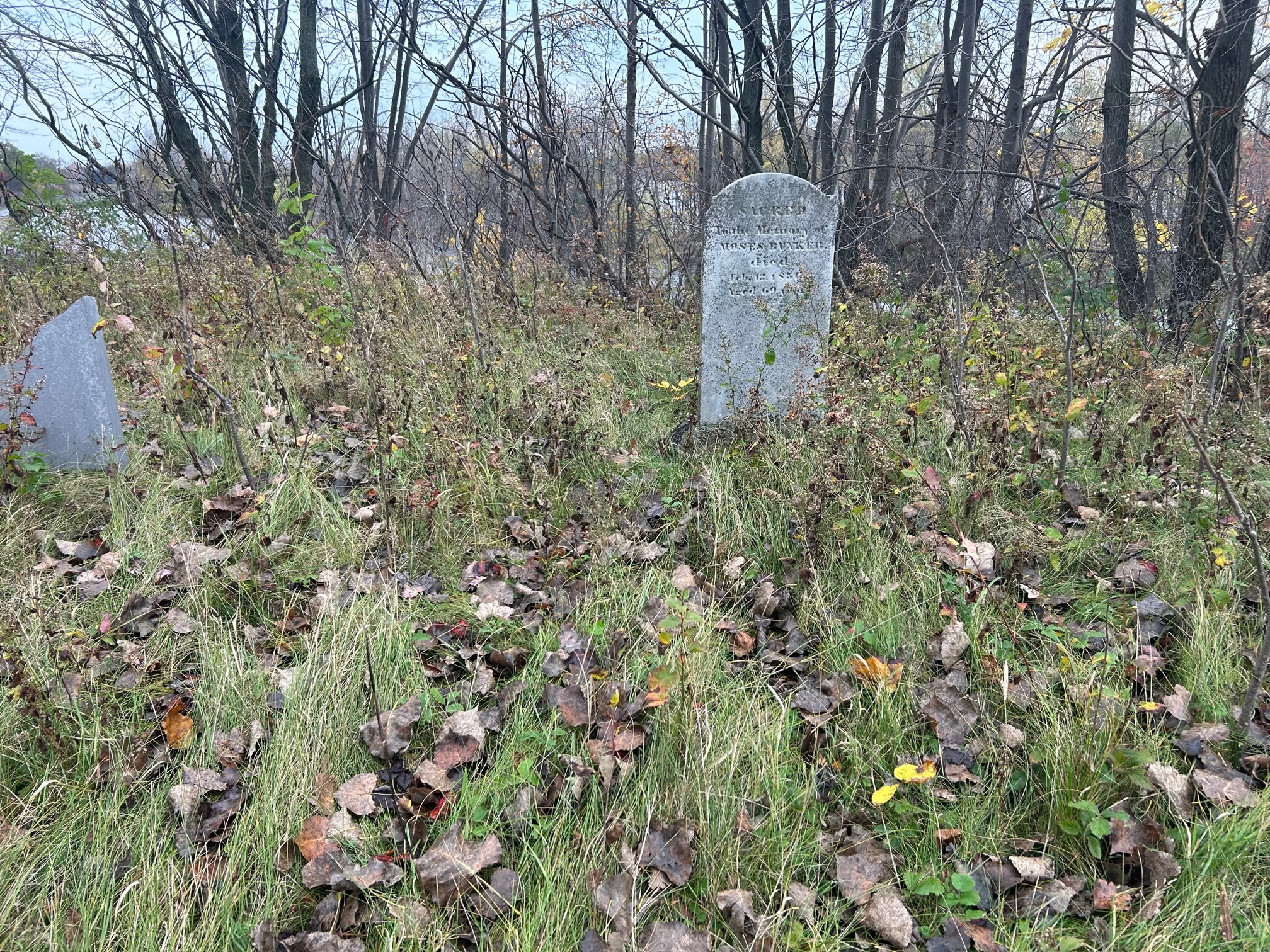200-year-old gravestones are lined up along the Chambly Canal on vacant private land in Carignan. But what to do with this legacy?
It’s a very inconspicuous piece of land. To get there, you have to walk five minutes from Chemin Sainte-Thérèse across private land to get to the edge of the canal. There are some gravestones there, marked by time and nature reclaiming its rights. One of the main steles indicates the name of Moses Bunker, who died in 1856. The others point to more or less the same period.
» This is private property that was acquired in October in a sale due to non-payment of taxes. » – City of Carignan
» This is the Bunker Hill Cemetery, says Gary Darveau, an area resident concerned about the fate of these graves. I want to know if Parks Canada has yet granted heritage status to this site, which is already in a deplorable state of disrepair. So much so that this year, due to plant growth around the funerary monuments located there, this site, normally visible from the cycle path along the canal strip, is completely hidden. »
Parks Canada, whose mission includes protecting and presenting representative examples of Canada’s natural and cultural heritage, disclaims responsibility for this approximately 300 m² property. » Although Bunker Hill Cemetery is located on the grounds of the Chambly Canal National Historic Site, it is not managed by the Parks Canada Agency. » The city of Carignan, for its part, assures that it has no authority to act. » This is private property that was acquired in October in a sale due to non-payment of taxes. Currently, this land is classified as undeveloped and unused land by approved assessors. »
Not recognized as a cemetery
The future of these gravestones is even bleaker, according to the city of Carignan, as the name “cemetery” is incorrect. » The Non-Catholic Cemeteries Act states that in order to be called a cemetery, any location must be approved by the Department of Health and Human Services. However, we do not have a cemetery on our territory. »
However, the site may reveal historical secrets of the place during colonization. The historian Réal Fortin, author of the book Fort Sainte-Thérèse and New France, assures that this land could have great historical value. » This cemetery deserves protection, especially since it was not the only Protestant cemetery built on family land at the time. It appears to be the only one that wasn’t destroyed. It almost disappeared during the construction of the canal that was to be dug nearby. On this occasion we even had to demolish one of Mr. Bunker’s buildings. »
Historical personalities
The doctor and patriot Timothée Kimber, stepson of René Boileau, who died in 1852, could be buried there. » We have this mention in the archives, acknowledges the historian Paul-Henri Hudon. He had studied medicine in France and returned to Canada with somewhat revolutionary ideas. He died a widower and a free thinker. »
Is it possible to renovate this place, which has no public access? »The former owners wanted to make a donation to Carignan, but the city never agreed, assures Luc Adam, the real estate agent in charge of the area. It is possible that a single-family home will be built on the neighboring property when the property is sold. » The city of Carignan rejects any new approach. » The current local council has never received such a proposal. »
Now the question arises about the future of these gravestones: invest inland or turn the page?

Total web buff. Student. Tv enthusiast. Evil thinker. Travelaholic. Proud bacon guru.







